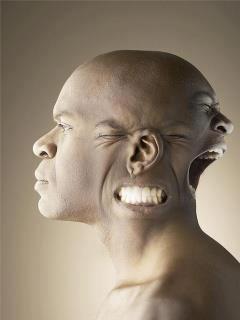 Triggers are the things that initiate thoughts, feelings and behaviours. There are triggers that boost performance and triggers that cause us to perform less than optimally.
Triggers are the things that initiate thoughts, feelings and behaviours. There are triggers that boost performance and triggers that cause us to perform less than optimally.
In order to perform your best, you want to begin by dealing with any obstacles and interferences that prevent you from achieving your desired results. This means becoming aware of the triggers that get you down and changing their effect into more resourceful responses.
Most of our unwanted behaviours are triggered below the level of our conscious awareness, which is why trying to change an unwanted behaviour or reaction without addressing its underlying belief and trigger usually results in failure.
Neuro-science has long known that our unconscious functioning precedes conscious awareness by about half a second. This means that most if not all issues like lack of motivation, procrastination, indecision, conflicting priorities, burnout, overwhelm and performance anxiety are a result of automatic unconscious reactions and patterns which occur before conscious awareness. Amazingly, though, most performance enhancing and coaching programs available today rely heavily on conscious processing through questioning, analysis, and tasking. It’s like trying to steer a train by asking someone in the last car to change the direction of the entire train. It simply won’t work!
So to get your train of thoughts, feelings and behaviours going in the right direction, start by becoming curious as to what exactly gets this process rolling? Once you’re steaming along it becomes very difficult to stop, let alone change direction, so become a trigger detective. This means bringing awareness into that slippery and illusive gap between stimulus and response.
Psychologist Rollo May said that, “real freedom is the ability to pause between stimulus and response and in that pause……….choose.”
There is a moment when something reminds you to think and feel a certain way. This is the stimulus or trigger. The response is that knee jerk action that results from this trigger.
It’s more difficult to become aware of your trigger as it fires than it is to recall a past experience when you behaved in a certain way that you’d like to change. When you become aware of the trigger in that past experience and then change the meaning which you give that trigger, this results in you no longer being affected by that trigger in your present and future.
In this way you can free yourself from outdated modes of thinking, unwanted feelings and limiting behaviours. So, let me explain how you can start by stalking those sneaky triggers.
In order for this process to be effective, only focus on one issue at a time. Start by remembering the last time you performed less than optimally, or reacted in an undesired way, or experienced a bad mood or an uncomfortable state. This must be something that you actually want to change.
Pay attention to where you were as you experienced this issue. Now, with this issue in mind, remember that prior to this you were fine and things were ok. So, how did you know it was time to begin having the problem?
Think back to being fine and then remember each and every tiny detail of your experience. Be there in your mind now and go through each and every move from being fine through to having the problem. What is the very first thing that you see or hear that gets the train in motion? Pay attention to your external environment and notice what exactly it is that triggers your unwanted state.
Be impeccable in your trigger elicitation. You will know that you’ve got it when you see or hear a certain stimulus and immediately get the unwanted feeling and/or negative internal dialog.
Depending on your situation, if there really is no external sight or sound that triggers your reaction, then it might be a picture that flashes through your mind or something that you say to yourself that sets things in motion. First try to identify an external trigger, and if you really don’t find one then go with the first internal picture or thought that steams up your engine.
Now you have found the nasty little culprit that can cause quite some upset in certain areas of your life. This is the trigger that’s responsible for the unwanted feeling or behaviour that you want to change. Well done, now let’s do something constructive about it so that this train never even leaves the platform. In fact, how would you prefer to travel through life? Decide now how you want to experience yourself in that challenging situation. Make sure this desired outcome is positive and compelling.
Next, with your trigger and desired outcome in mind, you can resolve that old issue for once and for all by applying the following healing and empowering processes in these articles:
If you would like to listen to a powerful audio programme that is specifically designed to help you eliminate the affects of unwanted triggers, then check out: Empowered Performance with HNLP
Written by Jevon Dangeli – NLP Trainer & Coach
PS: If you’d like to receive Jevon’s monthly Personal Development Tip and gain access to his other NLP related resources…all for free, opt in here.